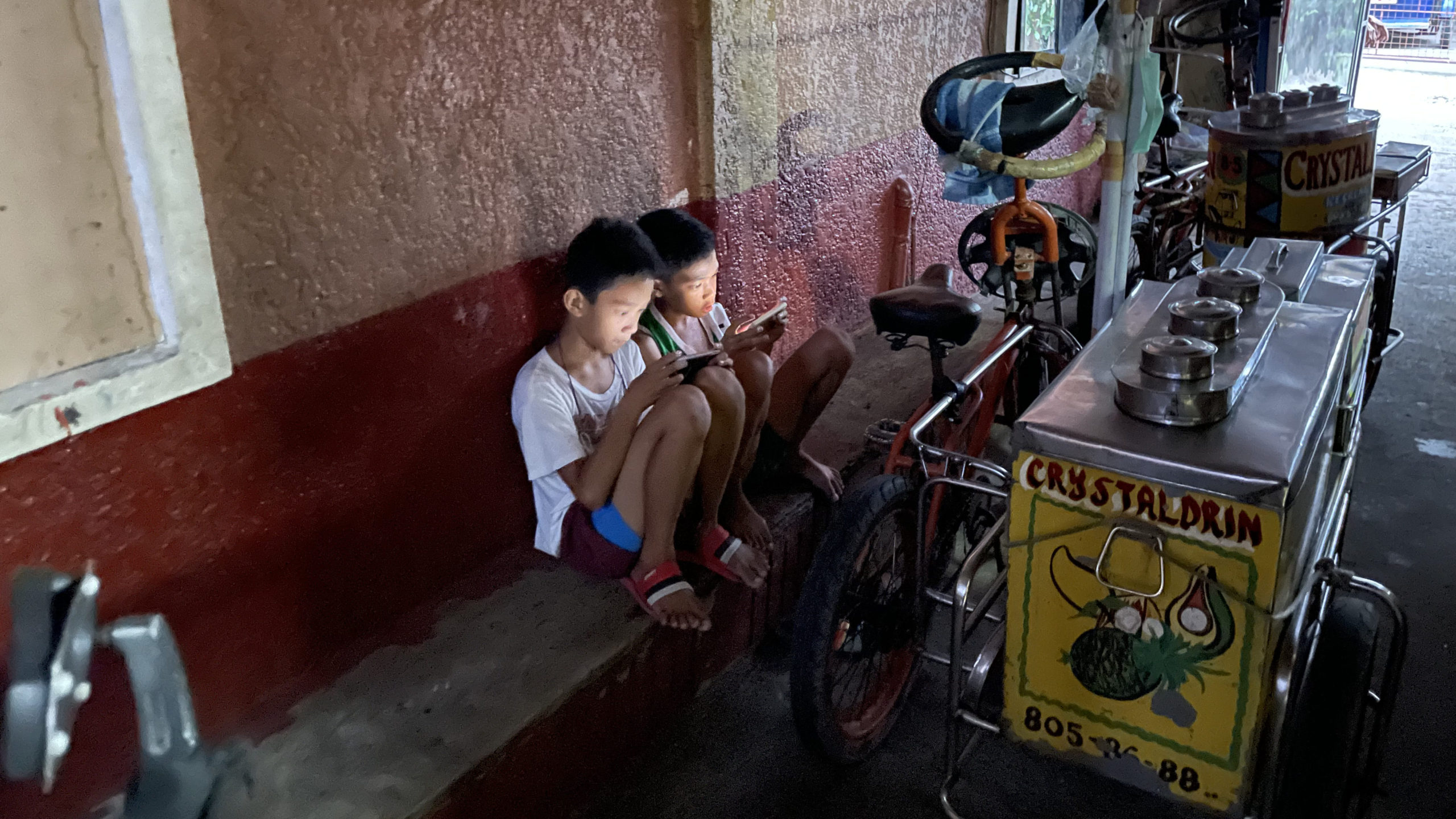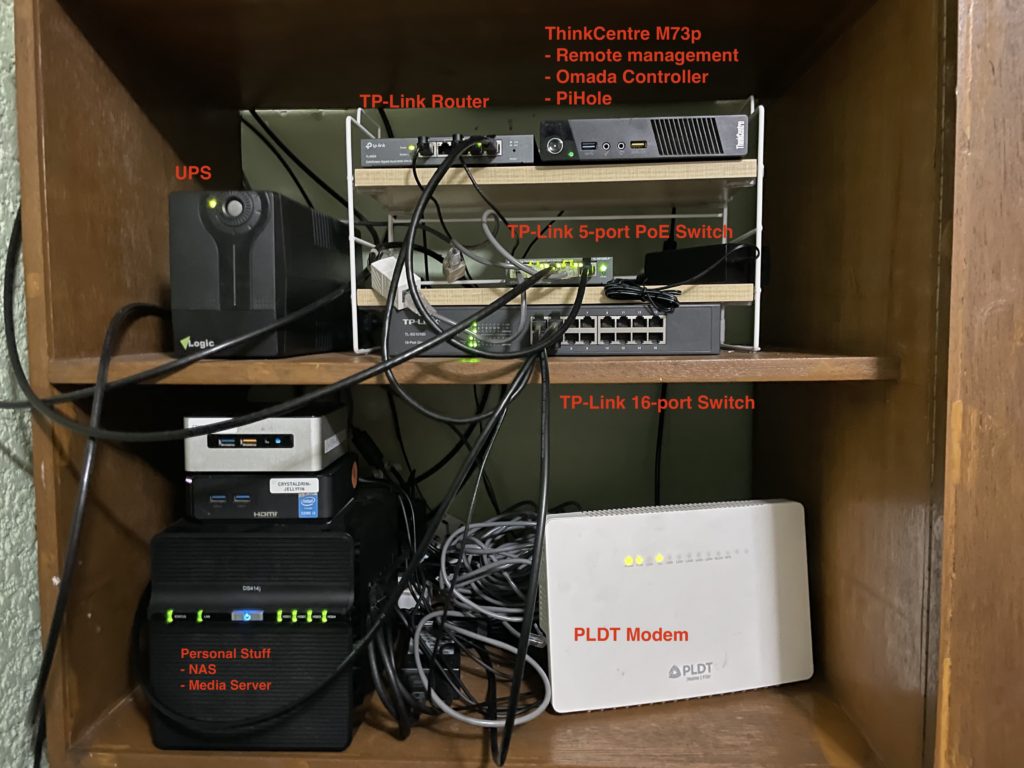
When fiber internet was rolled out at my Mom’s home, I had this itch to provide internet for the whole compound. She have an ice cream business and she provides housing to ice cream vendors (sorbetero) together with their families. Around half the compound are sorbeteros. Most of which will benefit if they don’t have to add another expense for internet.
Fiber made bandwidth cheap (P2699 for 100mbps). I knew that a 100mbps plan is more than enough for everyone there. The bottleneck is the device the comes with the internet plan. The device PLDT provides is actually an all-in-one that combines a modem, router, switch, and an access point (WiFi).
To increase coverage, I need to split out the access point and use a separate device.
Project goal
- Share internet that covers the whole compound
- Performance should be adequate for remote learning or work-from-home (Zoom, Google Meet)
- Have the same experience as having their own WiFi
- Roaming-capable (when people move, their device will automatically switch to the next nearest access point)
- Minimal restrictions
Implementation
I opted to go with a business-grade solution. Big factor is a single dashboard to manage all access points. I was initially considering Ubiquity, but then found out about TP-Link Omada which is half the price.
- I get notified through Omada app if the internet is down or if any of the access point stops working
- There are only 2 SSIDs (WiFi name) for 7 access points. One personal and another for the free WiFi. Each has it’s own subnet.
- Free WiFi’s subnet is limited to 50mbps to guarantee that the personal network always have bandwidth available
- Each device is further limited to 20mbps (initially this was 10mbps but utilization rate was low, I bumped it up to 20mbps)
- I had to block Mobile Legends because kids from other compound started coming to our compound to have a tournament until late night. Blocking is just another ACL rule to block port 30000 to 31000. ML stopped loading after this has been applied.
Interesting metrics
- 7 access points covered more than 20 households
- Average internet utilization is only around 20{5fcd3cbc9de14e1587c4b983f08e4837fa7ae8985dc66bae235a2c5aa0d68677}
- Average traffic is around 180GB download and 15GB upload daily
- Max connected clients so far was 90+ devices
- It’s been running since May 2021. Things has been relatively stable. Downtime was only when there’s no electricity.
Cost

| Item | Unit Price | Qty | Total |
| TP Link Router R509 | ₱2,180.00 | 1 | ₱2,180.00 |
| TP Link 5-port PoE Switch | ₱1,440.00 | 1 | ₱1,440.00 |
| TP Link EAP110-Outdoor | ₱1,400.00 | 2 | ₱2,800.00 |
| TP Link EAP225-Outdoor | ₱2,900.00 | 4 | ₱11,600.00 |
| TP Link EAP235-Wall | ₱2,900.00 | 1 | ₱2,900.00 |
| Thinkcentre m73p | ₱2,500.00 | 1 | ₱2,500.00 |
| Omni plugs | ₱442.77 | 1 | ₱442.77 |
| Waterproof Junction | ₱580.23 | 1 | ₱580.23 |
| 305m CAT6 outdoor cable | ₱2,250.00 | 1 | ₱2,250.00 |
| Total | ₱24,443.00 |
I could have implement the whole thing 50{5fcd3cbc9de14e1587c4b983f08e4837fa7ae8985dc66bae235a2c5aa0d68677} cheaper but it’ll be a pain to maintain and less fun to do. Since I’m doing this for free, I might as well enjoy haha.
Why
I see this as a hobby. I’ve always been fascinated with computer networking for as long as I can remember.
The 25k I spent could’ve easily been another gadget where only I would benefit (and add another stuff to my life). Spending it on this instead accomplishes two things 1) I had fun planning, figuring things out, and setting it up 2) It has good net effect because a lot of people are getting value from it. And that makes me happy.
I also learned a lot. I finally understood how VLAN works. It’s nice that I can map an SSID to a VLAN to have it’s own network. Power-over-Ethernet was also nice because there’s only one cable for power and data (CAT6).
Overall it was worthwhile.